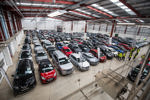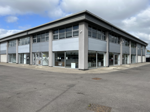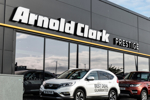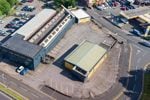The latest Refinish Industry Survey shows that one in two body repairers is prepared to invest £23,515 on average this year in equipment for their business.
The news has been welcomed by industry experts who were concerned by last year’s results, which found many bodyshops unable or unwilling to invest in inverter welders, aluminium repair bays and waterborne paint systems.
However, repair industry analyst Chris Oakham adds a note of caution. “Seventy per cent of repairers claim they can repair aluminium but there really aren’t that many aluminium bays out there. I think they don’t realize they can’t repair it because they’ve not yet had an aluminium car in, and it’s only when they get an Audi A2 in that they realize they cannot fix it. This is a bad reflection on the technical knowledge of the industry.
“On a brighter note regarding the EPA regulations, 69% are already using waterborne paints, and 97% are aware of the EPA compliancy changes.”
Oakham paints a gloomy picture of bodyshop numbers falling from 6,200 to almost 3,300 sites by the end of the decade if the trend of decline continues. A quarter of bodyshops trading in 2000 have disappeared, with small and medium-sized businesses hit hardest. He also notes that 10,000 employees have left the sector in the last five years, and the vacancy rate at bodyshops has doubled to 4% on last year.
John Wormald, managing partner of automotive consultancy Autopolis is less downbeat about the industry’s future. He suggests that the repair sector could evolve into three divisions, each specializing in different degrees of damage.
A division of 500 to 750 light repair centres, run along the lines of fast-fit mechanical workshops, could deal with the majority of jobs as in-car technology and speed enforcement means heavy damage becomes less frequent. Above that, Wormald sees 1,500 medium-impact repairers and 250-500 heavy-impact having the equipment and competence to deal with more serious damage.
The alternative, he says, is a “hell scenario” where most repairers are unable to cope with the advanced technology of new cars coming through, leading to a major motor accident caused by incorrect repair methods. He predicts that this could lead to regulation of the body repair sector.
“The question is, do we have an orderly transition to cope with the new technology, or do we fail to prepare, have a catastrophe and then have to change in a panic,” says Wormald.
Phil Brailey, motor claims manager at insurer Allianz Cornhill, says talk about a declining number of bodyshops affecting repair capacity is “scaremongering”, as repair jobs are becoming smaller so bodyshop throughput is increasing.













Login to comment
Comments
No comments have been made yet.